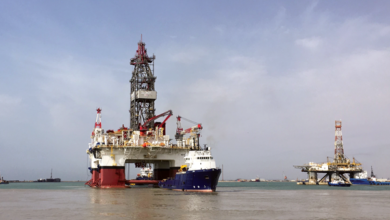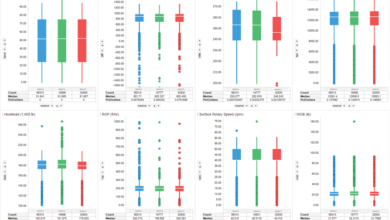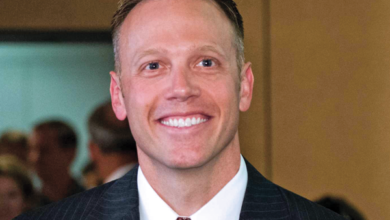Industry must improve its resilience by prudently managing financials, continuing to recruit, develop talent
Current environment can also be harnessed to encourage innovation, speed up technology development cycle and improve economics of projects
By Linda Hsieh, Managing Editor
Datuk Mohd Anuar Taib is Executive Vice President and CEO Upstream for PETRONAS.

From your perspective, what do you see as the most critical challenges facing the drilling industry today?
The expected prolonged low oil price environment will continue to put pressure on the drilling industry to consolidate, high-grade its assets and right-size the organization. The industry could face a significant challenge in ensuring focus on safe delivery of projects and operation while those in corporate centers focus on consolidation, high-grading of assets and right-sizing the organization. The drilling industry cannot afford another major safety and environmental incident.
The uncertain business environment has also resulted in the industry taking very cautious steps in the recruitment and development of staff. Would the industry have the right capacity and capability when the business environment improves, or would the industry be, again, in a scramble that we observed in the past?
The fall in oil prices calls for drastic cost reductions, and service/equipment prices have already been pushed to breakeven levels. Where else are operators looking for additional cost reductions?
Operators are looking to generate value out of their investments and operations. At the initial phase, efforts on value generation concentrated mostly around cost reduction through reduction of prices of goods and services. Going forward, focus will shift toward efficiency through technology, better work processes and change of standards, as well as collaborations on production enhancement. I think the latter, if implemented well, has the potential to align parties involved to a set of common goals where shared success can be realized over a much longer period.
What can oil and gas companies do during this downturn to better position themselves to take advantage of the next market upturn? Particularly in terms of people, how can oil and gas companies ensure they have the necessary talent once activity picks up again?
While all of us are hoping for better days for the industry in the future, we don’t know when that day will arrive. Veterans of the industry can still remember almost an entire decade of oil prices below $30/bbl. It is important for industry players to use these challenging times to improve their resilience through prudent financial management, efficiency improvement, technology, collaboration and potentially consolidation.
Learning from past experience, the industry needs to continue to invest in talent recruitment and development. The number of new talents recruited could be a lot less than before, but it must continue. The industry did not recruit much in the second half of the ’80s. The impact of this decision was felt in the second half of the 2000s. Given the impact of technology and the growing acceptance of big data management in the industry, the incoming talents may neither be the same, nor be as many per role as before. The key is we must continue to invest in talents.
In PETRONAS, we continue to collaborate with universities and technical institutions for talent recruitment and development.

Drilling contractors realize there is a lot of surplus in the rig market, particularly offshore. How can contractors bring more value to operators with their rigs and crews?
Oil and gas companies are looking for safe, high-performing rigs at market competitive cost. Drilling contractors may have to consider the choice of assets and crew in their portfolio to be able to deliver safe and efficient operations. Parties need to collaborate in setting up a longer-duration rig sequence and commercial framework that would facilitate a safe, high-performing and cost-competitive environment.
There is a growing amount of data being collected at the wellsite, but analysis and use of the data is still sparse. What is PETRONAS learning about data management? How can wellsite data be better used to improve drilling performance?
We started our digital journey a few years ago with the introduction of the Real Time Drilling Center. Since then, we have expanded our capabilities to production, logistics, well integrity and integrated activity planning at both the PETRONAS Real Time Visualization Center and the Integrated Operation Center.
While we have had great successes in using digital platforms and data management to improve the performance of specific operations – e.g., drilling data for drilling performance improvement and logistics data for logistic improvement – there are significant gains to be made in the integration of digital platforms and data to improve the overall operational performance of PETRONAS. This will be our focus in 2017 onward.
It’s commonly said that the oil and gas drilling industry is slow to change, unlike IT or the automotive industries, for example. Is the downturn forcing the drilling industry to respond faster? How can the industry speed up the innovation and technology development cycle?
We should not paint the whole industry with a broad brush that it is slow to change. The pace of change is usually commensurate with the level of rewards and risks of any given industry. Our industry has, over recent years, witnessed significant advancements such as the use of real-time data and analytics to improve performance, use of tools, technologies and methods to improve the efficiency and costs to deliver energy to the world.
In 2017, we will witness the first delivery from the world-first floating LNG facility – PFLNG Satu, which will significantly change the LNG landscape. The entire narrative about the unconventional shale oil and gas business is a testament to how fast the industry can change.
At the same time, our industry is one where any major incident can result in a significantly negative reputation, followed by a much more stringent regulatory framework. Progress within the industry must be made with proper perspectives of the opportunities and risks related to it.
We need to collaborate more to speed up the innovation and technology development cycle. At PETRONAS, our success in bringing our first floating LNG facility, PFLNG Satu, into operation from a conceptual stage is attributed to the willingness of parties involved to collaborate in an open manner to bring the best outcome to all. We are now embarking on a similar technology collaboration with our partners to develop solutions that allow us to produce and sequester highly contaminated gas offshore Malaysia.
How has the industry improved on well integrity over the past few years? What more needs to be done?
The industry and regulators have had significant learnings on well integrity at the back of major incidents in recent years. All things considered, the industry has reacted well in working with authorities in developing new standards for well integrity, especially at the back of the incident in the Gulf of Mexico. I am also positive with the quality of the implementation of those standards, especially amongst the major industry players.
Having said that, different jurisdictions around the world adopt different standards and practices. This adds complexity, cost and greater risk of poor implementation. The industry, through bodies such as IADC, need to continuously engage with the various jurisdictions with the desired outcome of greater consistency in standards and practices around the world.
Well completion costs can now be almost as much as drilling costs. What advances would you like to see in well completion technologies? How can costs be reduced in this area?
The fundamental objective of any completion is to deliver oil and gas to surface from the reservoir in the safest, most reliable and cost-efficient manner. Oftentimes, we moved away from this objective for the allure of gadgets, purported operational flexibility, absolute precision in data acquisition and exciting names for our completion. More often than not, the end results are wells that are more complex, fragile and require more manual intervention. While we should continue to pursue the various technologies and methods for well completion, we must not forget the fundamental objective of completing any well.
It is said that downturns breed innovations. What innovations do you either expect or hope will come out of this current downturn?
While the current environment is hard on the bottom line, I am encouraged to see the way some pockets of the industry approached challenges in front of them. The current environment, if harnessed well, encourages the spirit of innovation to thrive in the industry.
As an example, at PETRONAS, we are able to sanction an offshore enhanced oil recovery (EOR) project at the current environment when the same project couldn’t meet the required economic returns when the oil price was $100/bbl.
At $100/bbl, we wouldn’t blink an eye to call for the construction of a purpose-built water treatment and injection platform as a means to deliver the required injection volume for an EOR project complete with the supposedly required redundancies.
At $45/bbl, we reviewed the required injection volume and looked for nearby fields that are producing water, then we modified facilities on those fields to deliver the required volume of injection water to the reservoir.
I am sure that there are many more examples such as this in the industry – it is about unleashing the spirit of innovation from the great talents that we have.
On the market side, how is the volatility of oil prices affecting PETRONAS’ upstream projects? What can the industry expect to see from PETRONAS in the coming years?
The current market environment requires PETRONAS to be more prudent in the quantum and pace of our exploration and capital expenditure. We are striving toward a consistent level of expenditure on exploration and capital investment in the next few years. Every project around the world will go through the required technical and commercial rigor, and we continue to pursue growth opportunities domestically and internationally in countries such as Mexico and Iran, to name a few. DC




